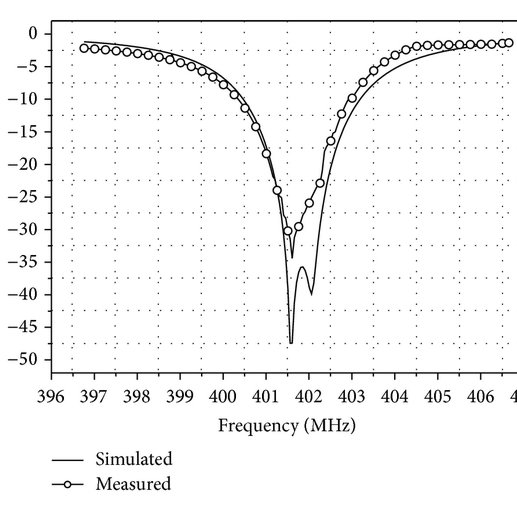Types of Filters There are three basic types of filters that you will be working with - Band Pass Passes a relatively narrow band of frequencies. This kind of filter is used often in front of receivers in order to pass the desired frequency or band of frequencies and attenuate frequencies outside of the desired band.- Band Reject (Notch) This is a compliment to the Band Pass filter. One use of this filter is to eliminate an interfering signal or band of signals.
- Band Pass/Band Reject Most VHF and UHF duplexers use this type of filter because a single filter can perform both tasks with reduced insertion loss. When tuning a Pass/Reject filter, typically you tune the pass band first and then tune the reject. This is because when you move the pass band the reject moves along with it. The adjustment for the reject side will move the reject point in relation to the pass band.
Of these three types of filter Band Reject and Band Pass/Band Reject are most common for making duplexers for the 2 Meter and 70 Centimeter Bands. Typically, in order to tune a filter or a set of filter like what makes up a duplexer, we need some way of looking at the frequency response of the filter(s). There are multiple ways of doing this, some easier than others. Tracking Generator My preferred method of tuning filters and duplexers is using something called a Tracking Generator. This tool is usually part of a radio service monitor or a spectrum analyzer with a tracking generator option. A tracking generator gives you a complete picture of the filter response at a glance which looks something like this:
The way this accomplished is one port of the instrument will generate a frequency sweep between two set frequencies, something like 440 to 445 MHz on a Generate port. This sweep will then be detected and displayed using the Antenna port with the DUT (device under test) in between. The maximum width of the sweep depends on the limits of the tracking generator and spectrum analyzer being used. Since a tracking generator generates a very low power signal for it's measurements, you can safely tune the filter(s) and watch the results in real time on the display. A piece of equipment like this would do the job nicely. NOTE: Never tune a filter when it is energized with the full power of a transmitter. Damage to the filter is likely to result permanently damaging the filter. Even 1 watt of power can cause permanent damage to the filter! The other very useful thing you can do with a tracking generator when paired with something called a return loss bridge is test antennas. This device is connected to the Generator and antenna ports of the tracking generator and the DUT connector is connected to whatever you want to see the return loss on.
In short what this device does is allow you to insert your tracking generator into a device such as an antenna and accurately show on the output the frequency response of the device and how much RF energy the device dissipates. The amount of RF energy that get dissipated by the Device is called Return Loss. Measuring the return loss of an antenna can tell us if the antenna is or isn't radiating efficiently. It will also tell you, when paired with a tracking generator what the bandwidth of the antenna is. Return loss is normally measured in dB.

Noise Generator and Spectrum Analyzer If you have access to a spectrum analyzer that does not have a tracking generator option you can still tune filters with a small, cheap piece of additional equipment known as an RF noise generator. These can be had all over Ebay. I have the one made in China by BG7TBL and it works very well. In short, the way a lot of noise sources work is by using a Zener diode that is biased just on the edge of zenering which creates a bunch of wide band RF noise. There are also diodes that are specifically designed to create noise. A company called Noisewave makes all sorts noise devices including specialized noise diodes. The noise created by the devices is very low level and is fed into an amplifier, usually a cascading set of amplifiers in order to get the power output up to a level that is useful. Pictured below is the BG7TBL Noise Source, this unit uses a Zener diode to create its noise.I was planning on making a video on the use of the noise generator but someone else has made a good video showing its use. IMSAI Guy - Using Noise Source with Spectrum Analyzer YouTube Video IMSAI Guy - BG7TBL Noise Source Schematic
Duplexer Tuning The two most common types of duplexer you will find are the Band Pass/Reject duplexer and the notch duplexer (also known as a "mobile" duplexer). Tuning both of these kinds of duplexer are slightly different in the way you tune them. Band Pass/Reject Duplexer Tuning Here is a picture of a typical example of a BP/BR duplexerIn this example, the large center tuning rods are your Pass adjustment. With this unit, you would loosen the lock nut on the rod and the rod will be free to move in and out. These rods are smooth with no threads but some manufacturers thread their tuning rods like a long screw to aid in more precise tuning of the pass band. In this example, these rods lower the pass frequency when pushed in and raise it when pulled out. To tune a duplexer with smooth pass tuning rods I will not completely loosen the lock nut on the rod and slowly twist the rod in or out to get the rod to the desired position and then tighten the lock nut CAREFULLY! You do not want to bump the tuning rod and throw off your adjustment. Your reject adjustment on this duplexer is done by turning an adjustable trimmer capacitor typically called a piston trimmer. These are located under a small brass protective cap right next to the connector on each cavity section. These caps unscrew and you would use a flat head tuning tool usually made of ceramic or plastic to make your adjustment. You can use a regular flat head metal precision screwdriver to do this but you must make your adjustment and then remove the tool from the trimmer before to look at where your adjustment is on your test equipment. Leaving the tool in the trimmer can cause an incorrect reading. This duplexer has three ports, a TX, RX and Antenna port. The TX and RX ports will sometimes be labeled "Hi Pass" and "Low Pass". As you will know with the repeater pair you would be using one frequency is higher than the other, so the higher frequency would use the "High Pass" port and the lower one using the "Low Pass" port. You can start with tuning either side of the duplexer, it typically does not matter which one you choose. Lets say you start with the "High Pass" port first, this is how you would connect your equipment: High Pass Port - Connect to signal or noise source Antenna Port - Connect to spectrum analyzer or other monitoring equipment Low Pass Port - Connect a dummy load Then, when you move to the low pass side, your connections would look like this: High Pass Port - Connect a dummy load Antenna Port - Connect to a spectrum analyzer or other monitoring equipment Low Pass Port - Connect to signal or noise source You connect you signal source on the High or Low Pass ports so that all of the energy of the signal source passes through those filters. If you were to connect it at the Antenna Port you may have the issue. A good portion of your signal may get sucked out by the opposite side of the duplexer before it has a chance to pass through the filters you intend to tune and seen by your test equipment. Making it more difficult to tune, especially on the Band Reject side. The dummy load on the unused port is important because if there is not load on the port, you can get reflections off that port that will cause anomalous readings to be seen and cause your tuning to be inaccurate. As mentioned before, you need to start your tuning procedure using with the Pass Band rods first. Along with this, I typically start with the filter closest to the port where I am injecting my signal or noise and work my way to the filter closest to the antenna port. I find this causes me fewer issues while tuning a duplexer but your mileage may vary. Band Pass Rod Tuning Tuning the Pass on the first filter assuming you are using a spectrum analyzer, you should see a pass band bump moving around as you push the rod in and out. Typically your spectrum analyzer is setup with your desired frequency set to the center of the screen. You will tune that Pass Band bump to the center of your screen. Then you move to the Pass Band of the next filter and you will notice another bump moving around, the goal here is to super-impose that second bump of the first one you tuned and you will noticed the combined Band Pass bump will become more pronounced with the tuning of each new filter on that side. Once you have the Pass Band rods tuned on the side you are tuning you can lock them down using the lock nuts, being careful not to move the rods while you are tightening them. These nuts do not need to be tight, just snug, if you over tighten you can cause your tuning adjustment to move. Band Reject Tuning This is done on most duplexers using the previously mentioned piston trimmer capacitors. Tuning the reject side of the filters can be a bit more tricky. This is due to when you start getting those reject notches lined up on all the filters, the combined result on the spectrum analyzer display will often be down past the noise. This will depend on how much RF energy you can put into the filters but often times with high Q very sharp and deep notch filters when all of them are tuned it will (well it should be) be well below your spectrum analyzers noise floor. Usually, the first notch you tune on frequency you will be able to see, once that one is tuned when you tune the other cavity notches, what I typically do is bring those additional notches over the first one I tuned then I make sure the two sides of the combined notch is centered on the desired frequency. If it is centered, then you can consider the notch for that side tuned. NOTE: There are some duplexers that require a very specific tuning procedure in order to achieve accurate tuning. Refer the manufacturers instructions if for some reason you cannot achieve the desired results. If you are unsure of the design of the duplexer, refer to the manufacturers information first before making ANY adjustments. This will save you time and frustration since trying to tune a screwed up duplexer is more difficult than trying to tune one that has already been properly tune for another frequency set.
